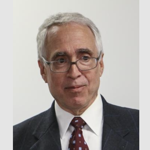Richardson Redux

nergy Department Secretary Bill Richardson testified before the Senate in June that he was mystified about the latest security breach at Los Alamos nuclear weapons laboratory. "It is unacceptable and incomprehensible to me," Richardson said of recent reports about lost computer drives, "and I will not rest until I know precisely what happened."
Although it is safe to say that no Energy Secretary has ever worked harder to change what Sen. Richard Shelby, R-Ala., calls the "culture of indifference" toward security, Richardson is strangely lost. This is surprising for someone who declared himself to be completely in charge of the department when he appointed a security czar more than a year ago. If Richardson wants to know why the message about nuclear security is not getting down to Los Alamos, he should pull out the Energy Department phone book and call everyone in the chain of command.
He should start with his own office, including his chief of staff, two deputy chiefs of staff, and 11 senior policy advisers, one of whom is in charge of nuclear security affairs. Total calls to get to the bottom of his own office? At least four.
Richardson should then call his deputy secretary, and spend a moment musing about how the second most important office in his department can run with just a single policy adviser and a special assistant when the Secretary's office relies on 20 full-time employees plus support staff. Total calls to explore the deputy secretary's office? Exactly one.
Richardson should then call the undersecretary for nuclear security, who also serves as administrator of the newly created National Nuclear Security Administration, then transfer down to the deputy administrator for defense programs, the principal deputy administrator for military application, the principal assistant deputy administrator for operations, the assistant deputy administrator for military application and stockpile operations, the associate deputy assistant administrator for nuclear weapons surety, and the director of the office of nuclear weapons security and control. Total calls before finishing with the Washington headquarters? Seven.
If he still has the energy, Richardson should call the president of the University of California, which administers the Los Alamos contract on behalf of the federal government, then ask to be transferred down to the senior vice president for business and finance, who can transfer him again to the vice president for financial management, then to the assistant vice president for laboratory administration, then the executive director for laboratory operations, and finally down to the manager for facilities management and safeguards and security, and the rest of that staff. Total calls? Six to 10.
After that, he should talk to director of the Los Alamos laboratory, then ask to be transferred down to the deputy laboratory director for laboratory operations, then down to the associate laboratory director for nuclear weapons, and finally down to the director of the security and safeguards division. Total calls? Five to 10.
If Richardson still does not understand the problem in changing the agency's culture, he should talk to his inspector general, then ask to be transferred down to the principal deputy inspector general, and from there on down to the assistant inspector general for investigations, the deputy assistant inspector general, then down to special agent in charge of the Western Region, then down to the assistant special agent in charge of the Southwest Region, and finally to the field staff who should be investigating the problem. Total calls? Seven to 10.
The more he lets his fingers do the walking through the hierarchy, the more Richardson will finally understand why the security problems persist. Like so much of the over-layered federal bureaucracy today, the problem is not too few managers, but too many. After making 50 calls, Richardson would still be hard-pressed to point a finger at any one person who can be held ultimately responsible for what goes right or wrong with nuclear security.
Richardson believes just the opposite. "This could simply be a case of an individual who made a mistake and was terrified to come forward because they knew how seriously the department now takes security," he told the Senate. Maybe-if that were true. It's more likely that someone made a mistake and knew quite well that it would takes months for anyone to discover it, and even longer for the discovery to percolate upward in one of the federal government's densest hierarchies.
Firing Richardson will hardly solve the problem. He would just be replaced by another Secretary who would perch 40 to 50 layers above the front lines. Moreover, Richardson can hardly be blamed for the layers that were created in previous waves of reform.
Richardson and President Clinton should be held accountable, however, for appointing the same people to hold posts in the new National Nuclear Security Administration and the old division for nuclear security. This "dual-hatting," as Richardson calls it, creates considerable confusion about just who has authority. By maintaining the old structure side-by-side with the new, Richardson contributes to the confusion of accountability that plagues the department.
Paul C. Light is the author of The New Public Service (Brookings Institution Press, 1999).
NEXT STORY: Viewpoint







